Dissecting Boston VII: Erosive Division
“Man dominates nature, but nature while yielding, modifies man’s lordship and directs his energies to an extent that few economist appreciate. The first impression that New England made upon Europeans was gracious. Better acquaintance brought disillusion to those who anticipated large returns for little effort. New England is no prodigal to the shiftless. It can be well compared to a brilliant woman who fascinates but eludes. Further acquaintance taught the pioneer that he must endure hardship and overcome difficulty before New England would grant him a home. He accepted this challenge and marveled at the abundant reward.”
— The Conqest of New England by the Immigrant, Danielle Chauncy Brewer, 1926, p. 20-21.
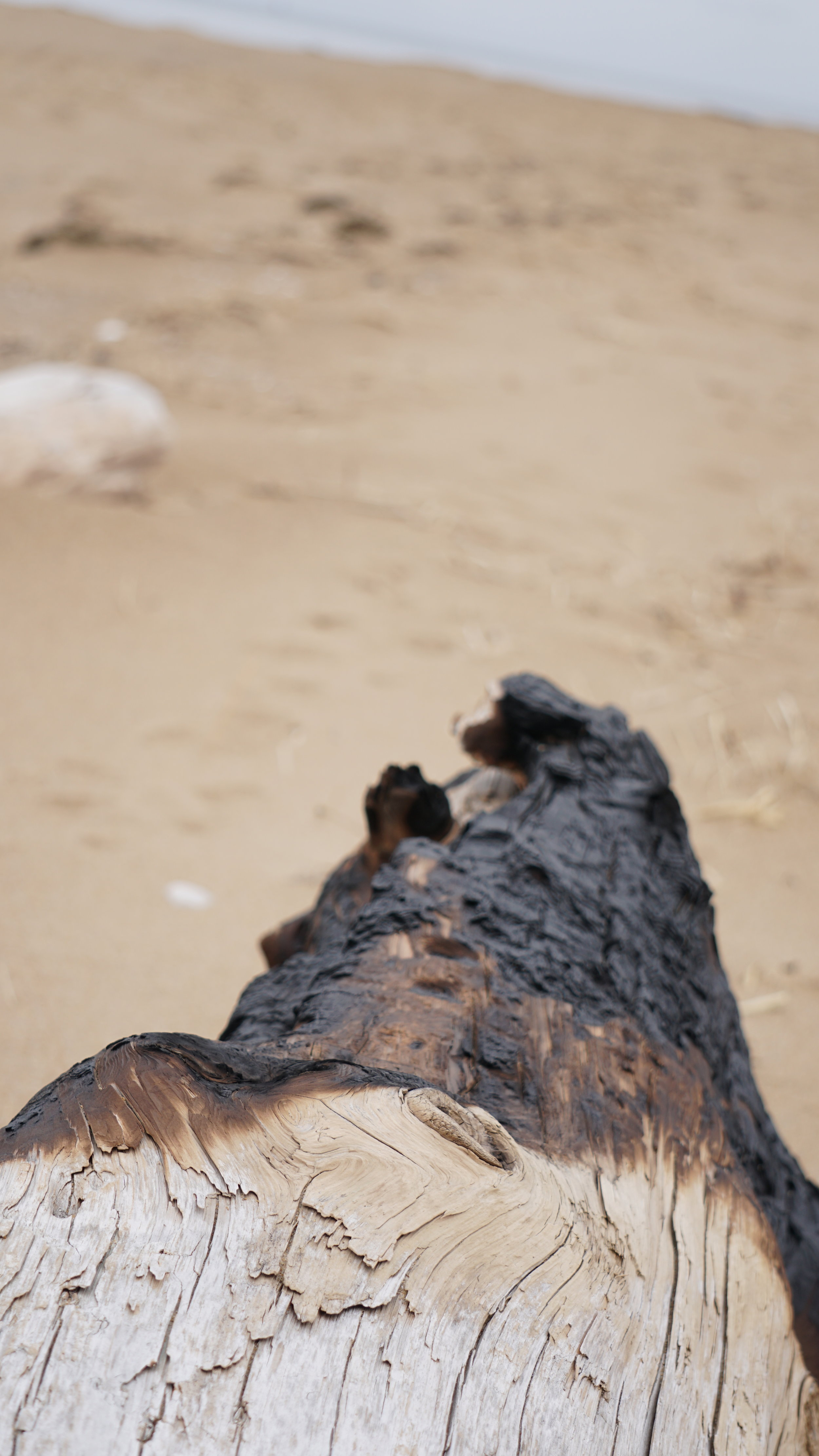

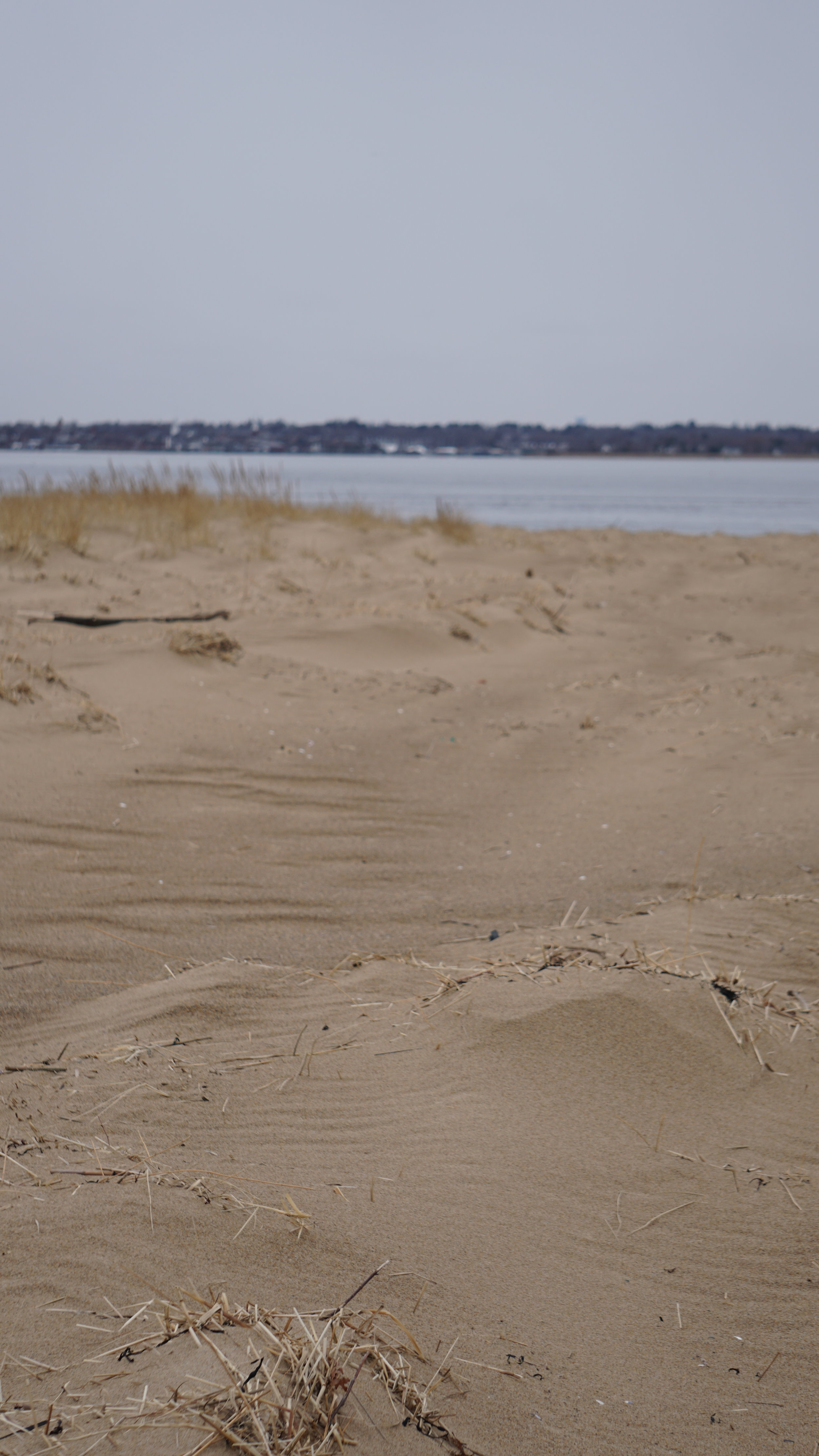
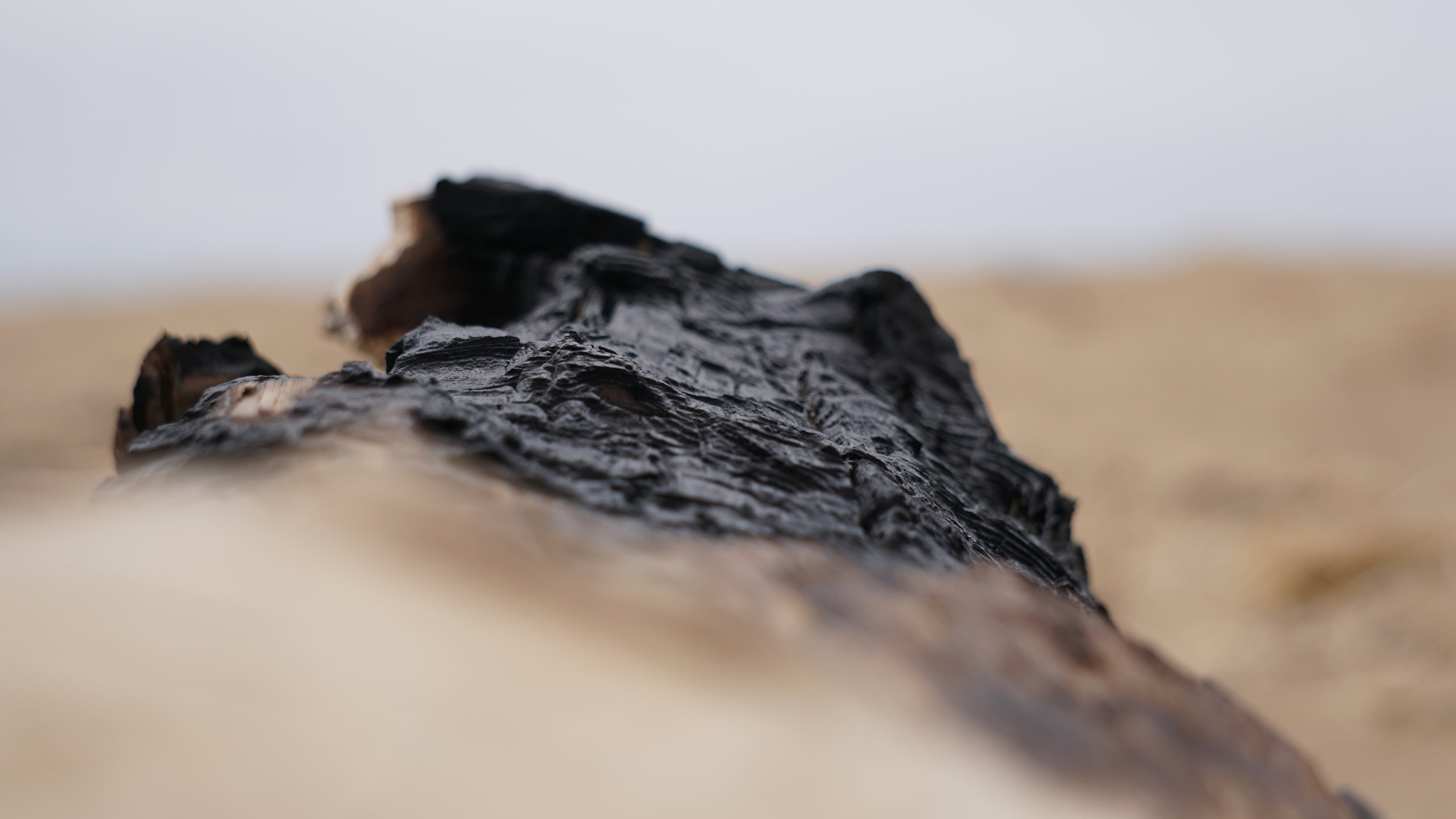

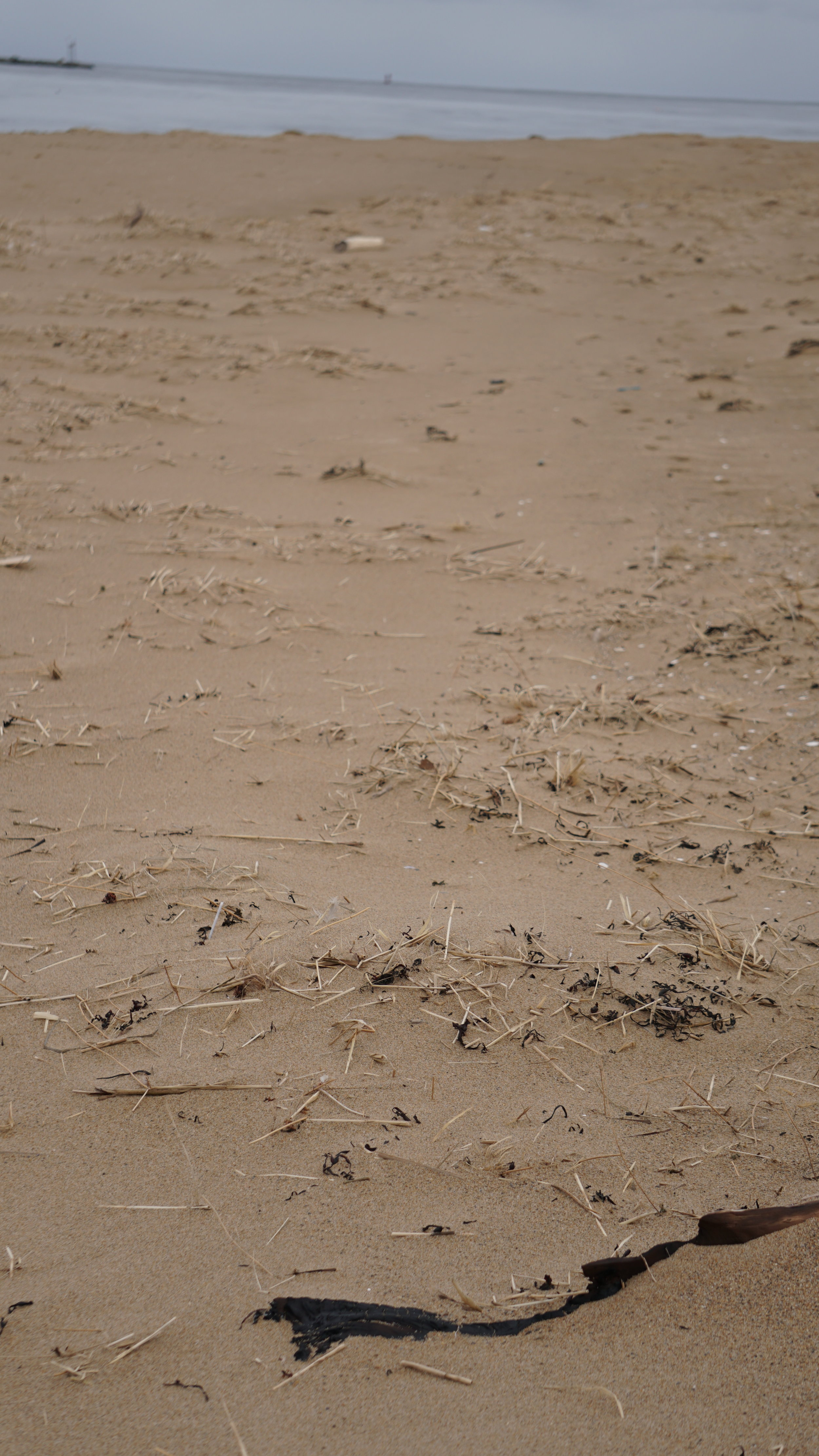

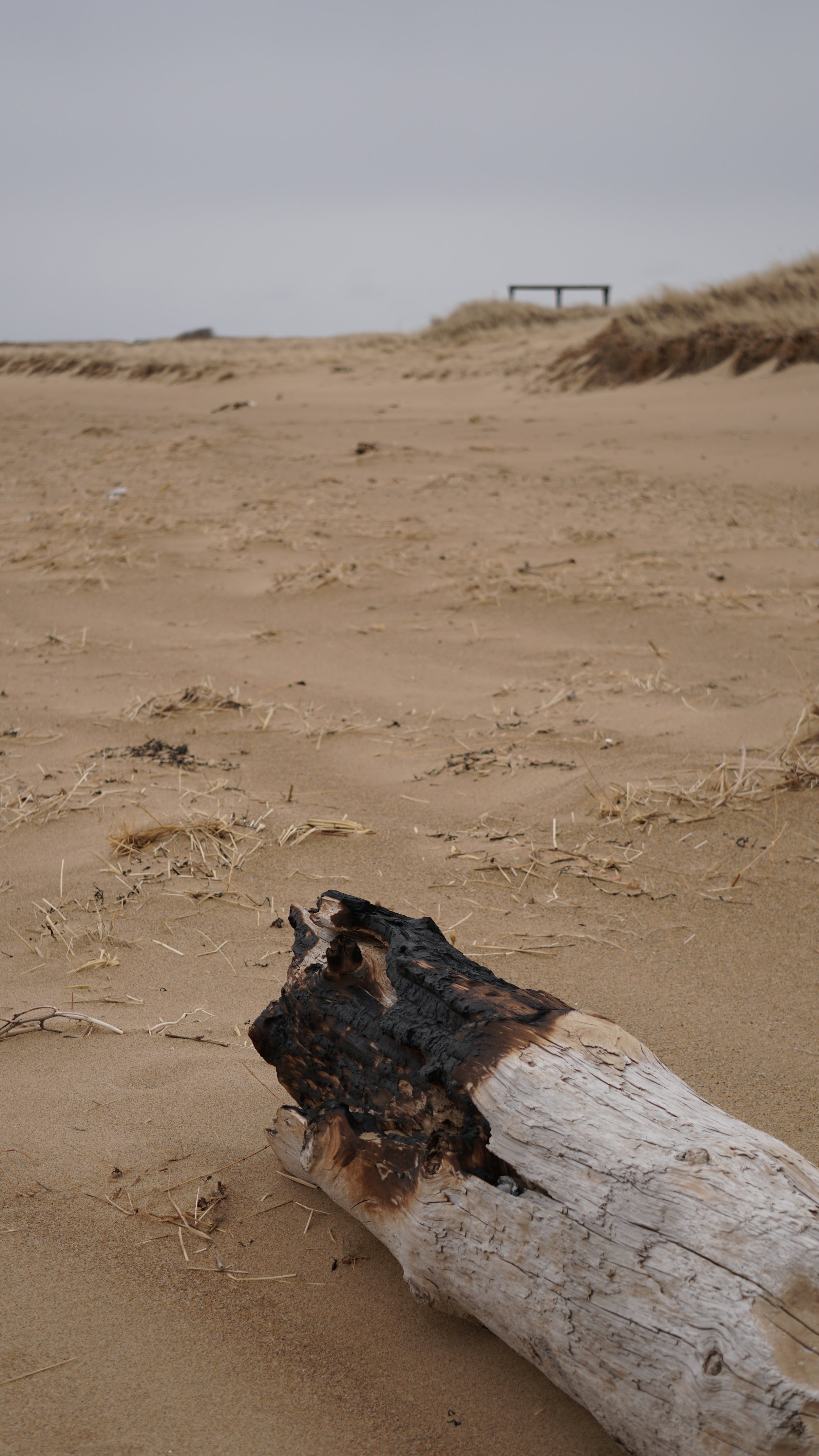
Sand dunes on Plum Island, washed away by winter storms. Photographs by Tzintzun Aguilar-Izzo.
The beaches of Plum Island lie barren. The Ammophilia Breviligulata have been submerged, embraced and stolen by the Atlantic Ocean and the high tides of the Merrimack River. Winter storms have battered Plum Island, my current case study, in the dissection of American borders. For millennia, the ocean has continually transformed the topography of an iconic New England vacationland. Sand dunes, delicately held together by the Ammophilia Breviligulata (American Beach Grass or sand-lovers), were flattened by large Northern Eastern waves. These waves drag the sand dunes and the beach into their tumultuous depths. When the waves dissipate, ceasing their relentless dance, large portions of the beach disappear and the sand dunes lie abandoned, flat expanses of plastic trash and drift wood. At times the water takes a house or two, or three. This populated sand bar, known by some as "paradise," is both public and private property. Large houses stand, looking out to the open ocean. The fences that divide them are left dangling over the precipice of stolen sand. The private property has been claimed by the ocean.
It is a day after Earth Day. People all over the world marched for Science, for the Earth and the fragile ecosystem we (as an invasive species) are slowly exhausting. These protests can be viewed as the last gasp of a dying and destructive species. Much like the current homeowners on Plum Island, some of these protesters begrudge the rising waves but ignore the connection between their luxurious villas and an advancing climate catastrophe. It is still unknown whether human civilization will survive its self-induced annihilation. The global perception of private property, of ownership and commodity are still the foundation of most discourse on global warming. We consume to protest, buy into a segmented economy to purchase our right to speak. If we interpolate this economy, that #Starbucks coffee, we internalize the spectacle and division of a broken world. Borders ripple through our viral newspeak, dividing our perception of self and constructive action.

"Precarious Balance," Part of the Outer Limit Public Installation by Tzintzun Aguilar-Izzo
In the piece "Outer Limit", I constructed my own fictitious border, partitioning a public beach in two. With logs, drift wood, fragments of broken fences and construction material used to build new seaside palaces, I devised an impermanent structure. Reminiscent of the first fences used to corral New England's rampaging hogs, this fence was built twice. Its first iteration was washed away the very same day of its inauguration, the rising tides reclaiming the debris. The second version, here documented, was torn apart by heavy winds. The water rose, enveloping the illusory boundary, borderland. The title, "Outer Limit," is derived from from two scribbled words written on one of the pieces of construction wood. The "outer limit" of a million-dollar vacation house. The outer limit of someone’s property, commodity. The outer limit of protected wealth. The outer limit of suspended destruction.
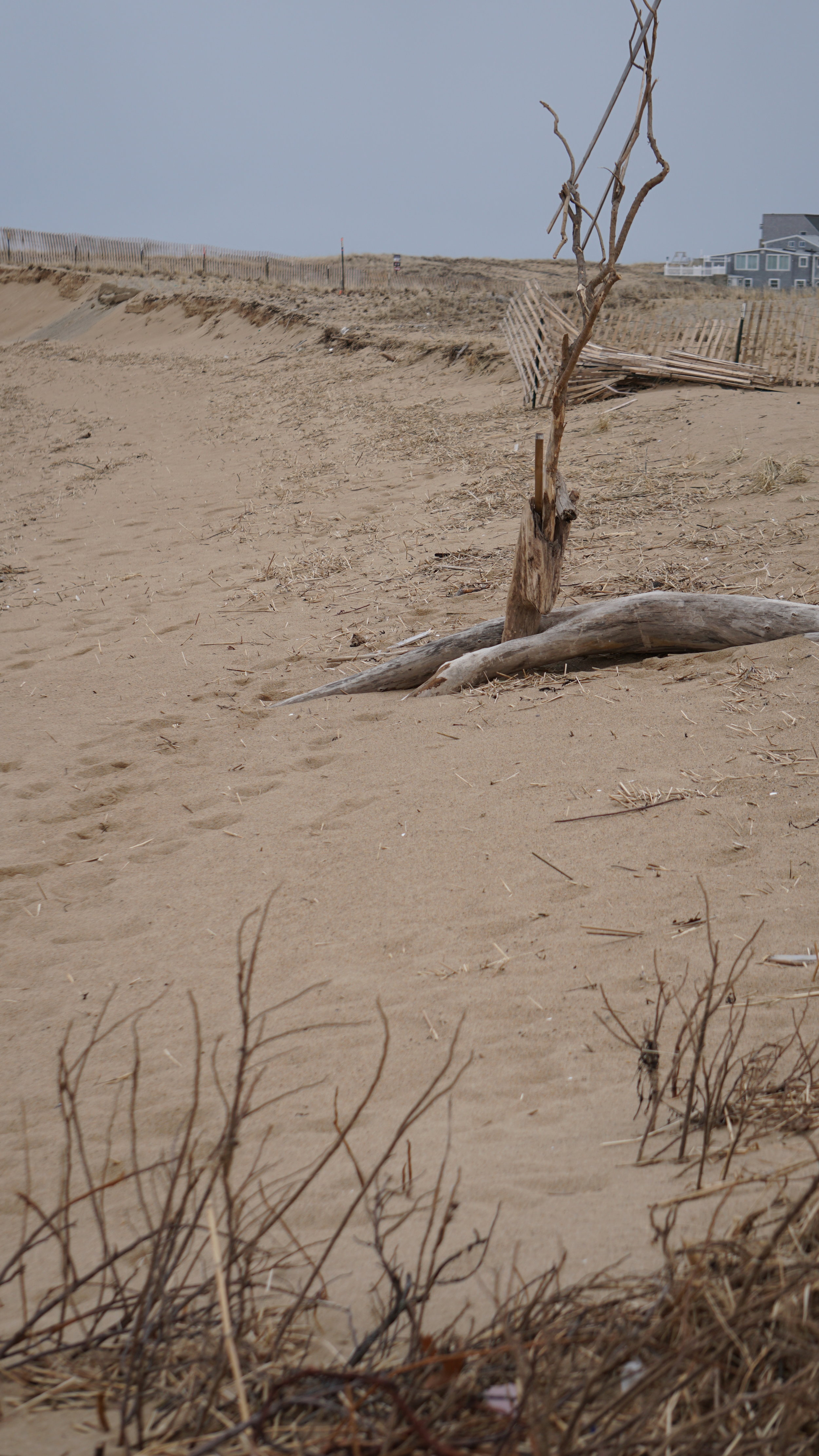
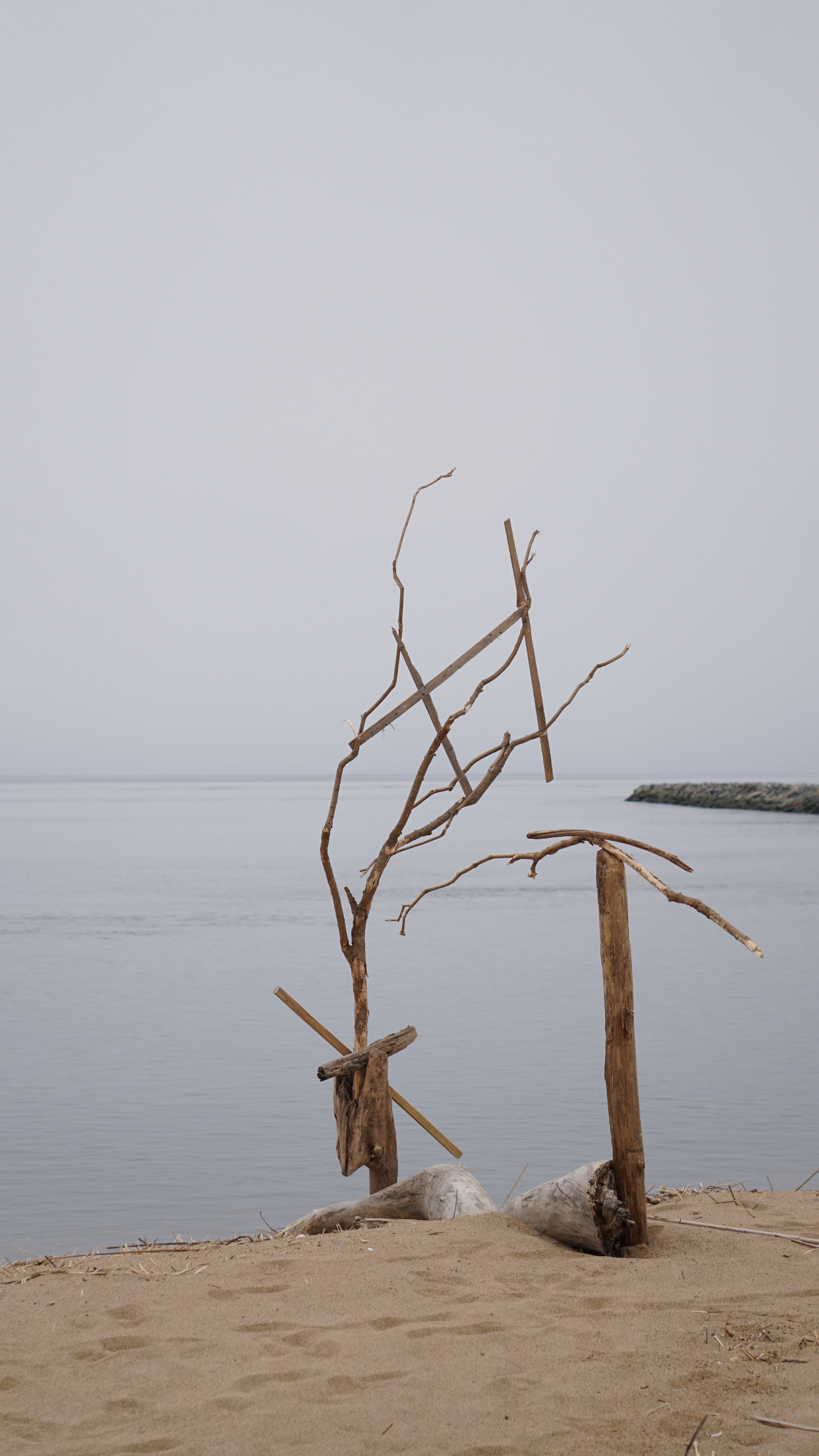

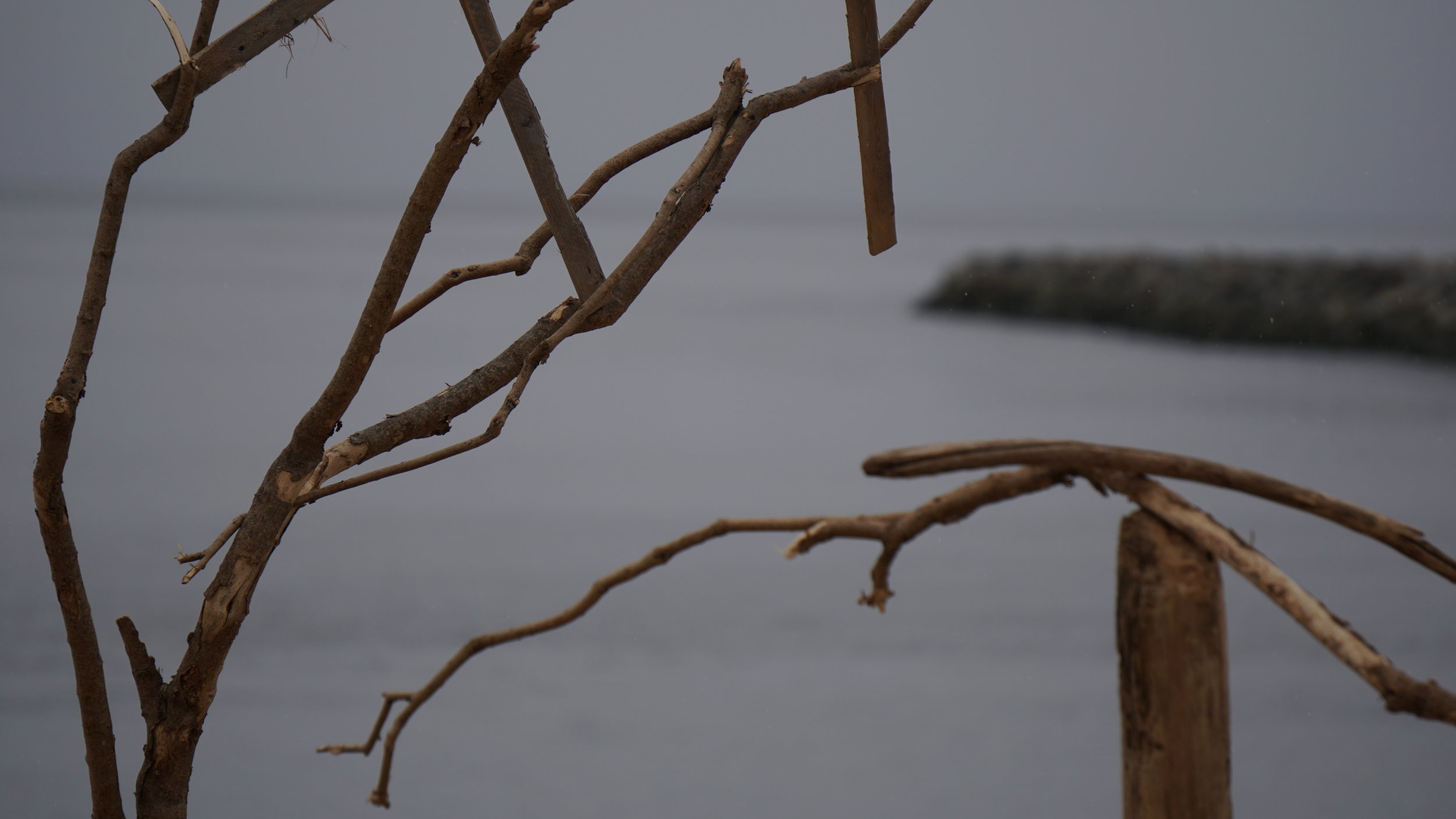
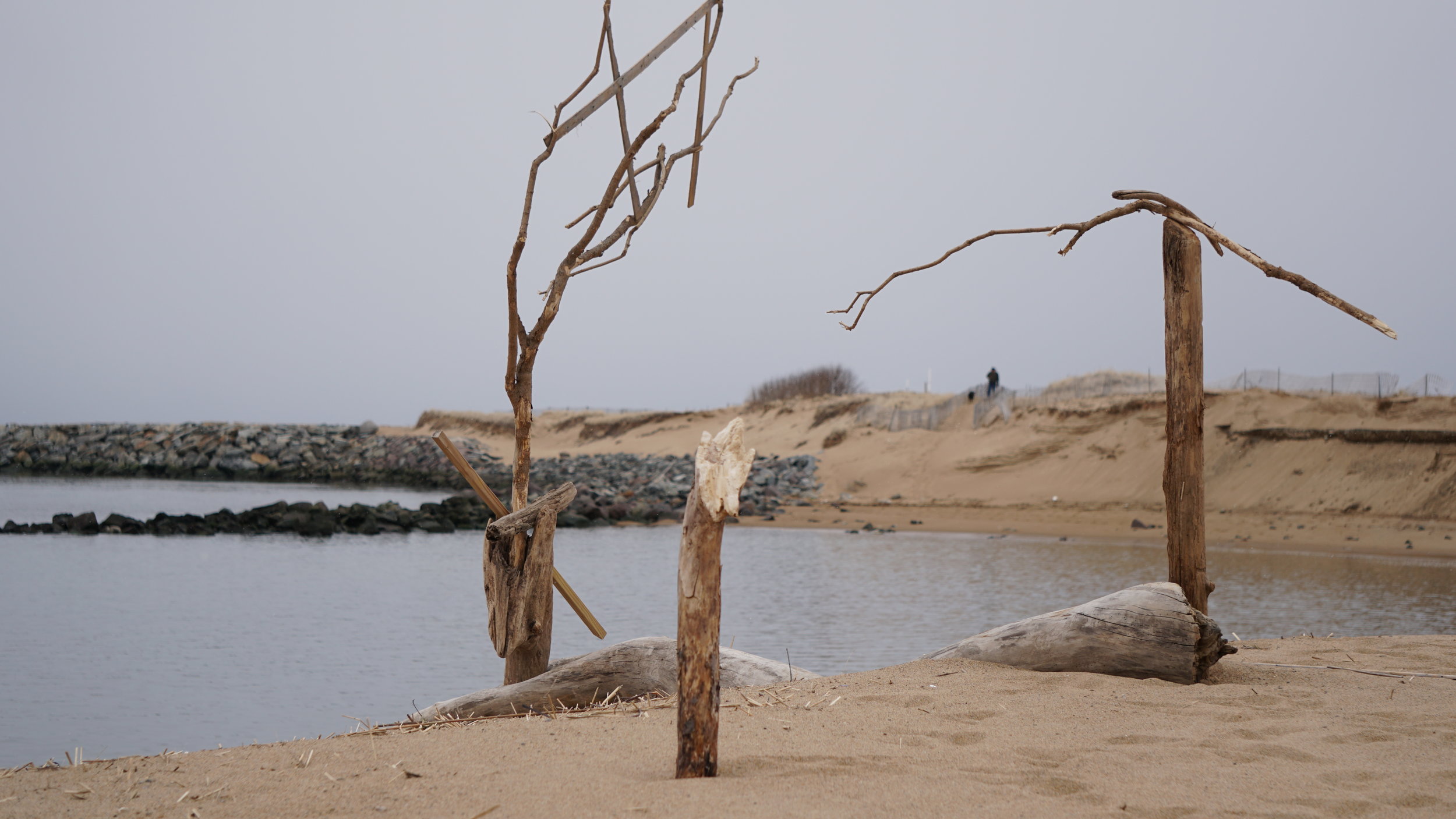

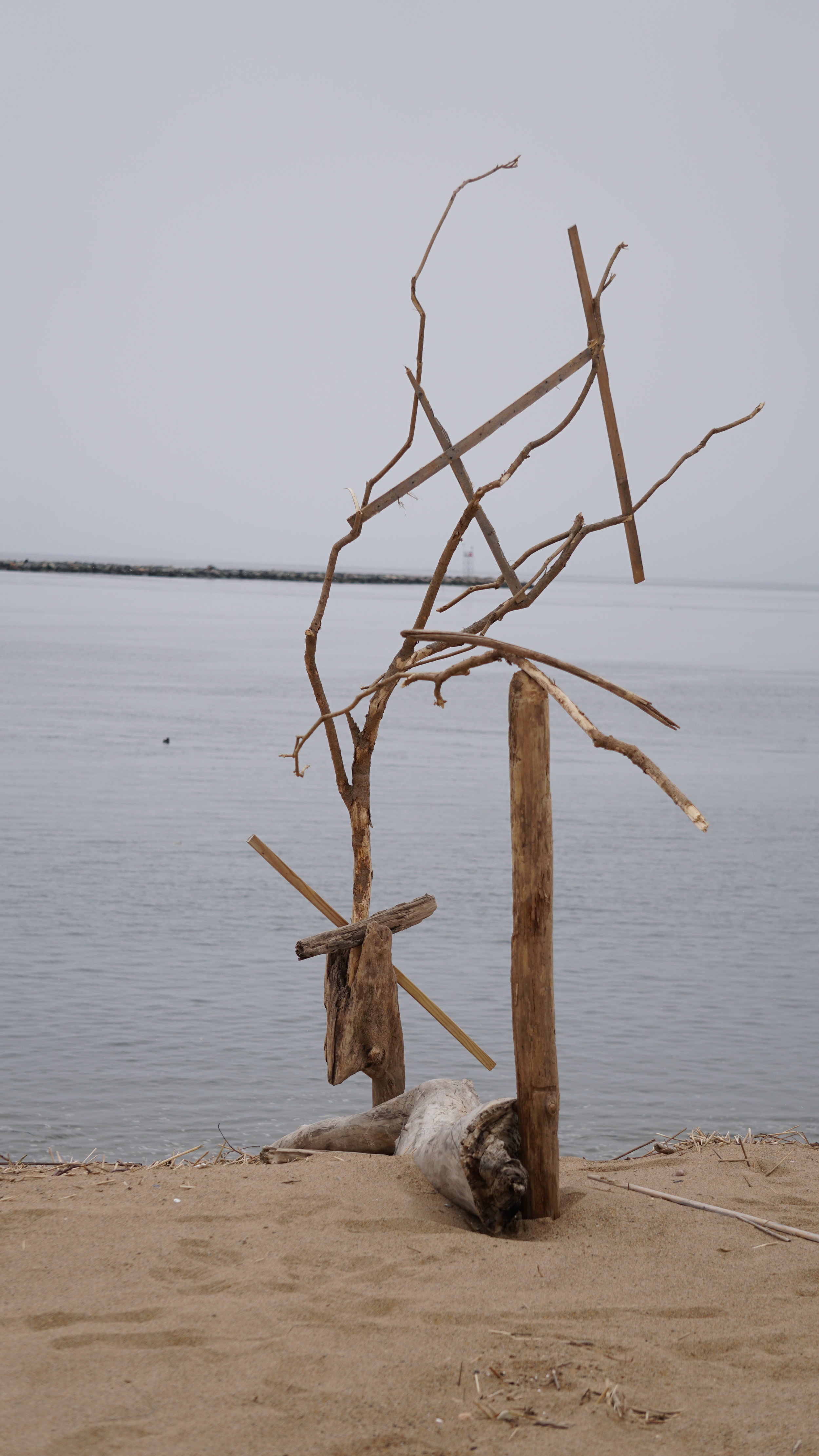





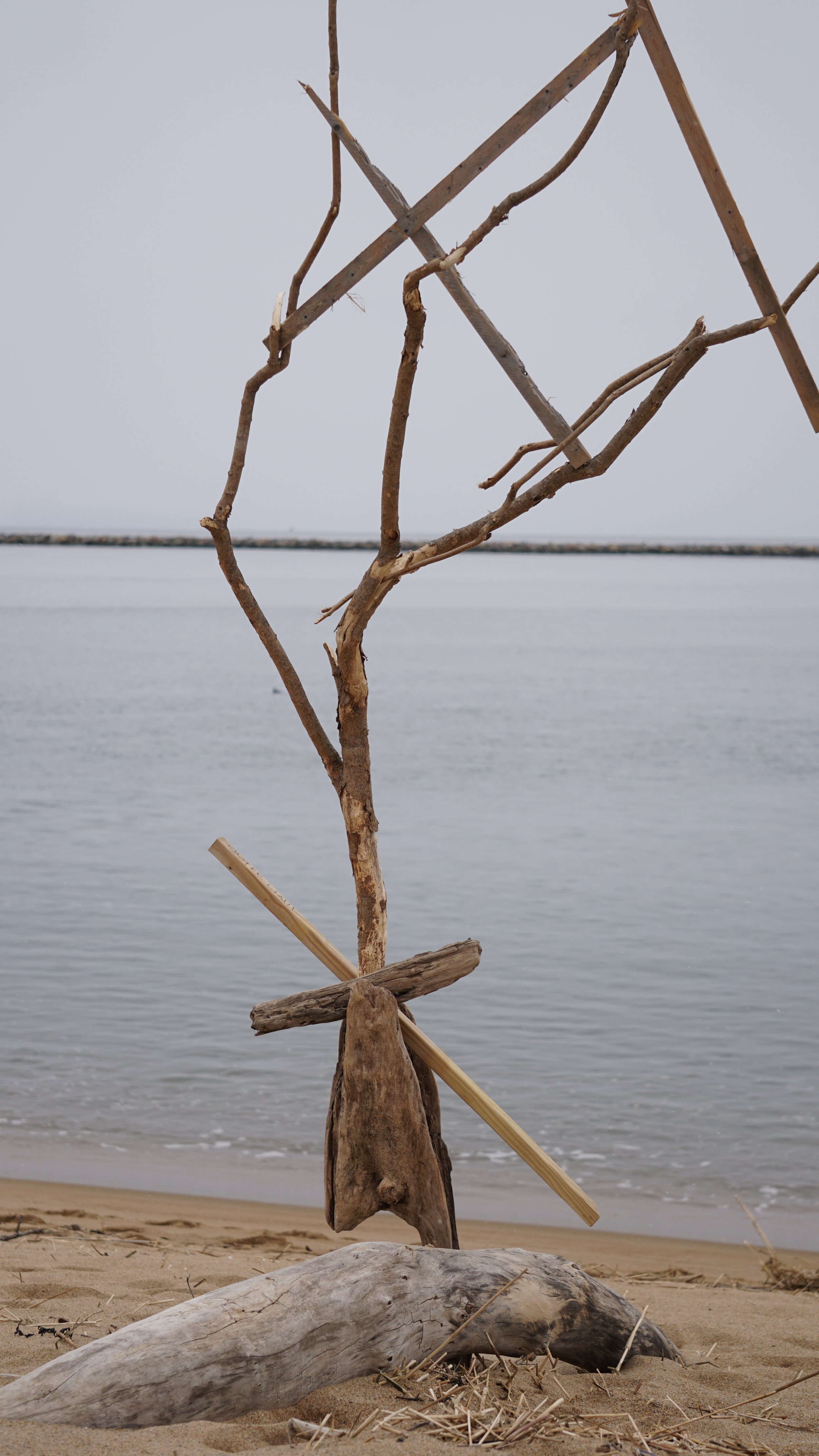
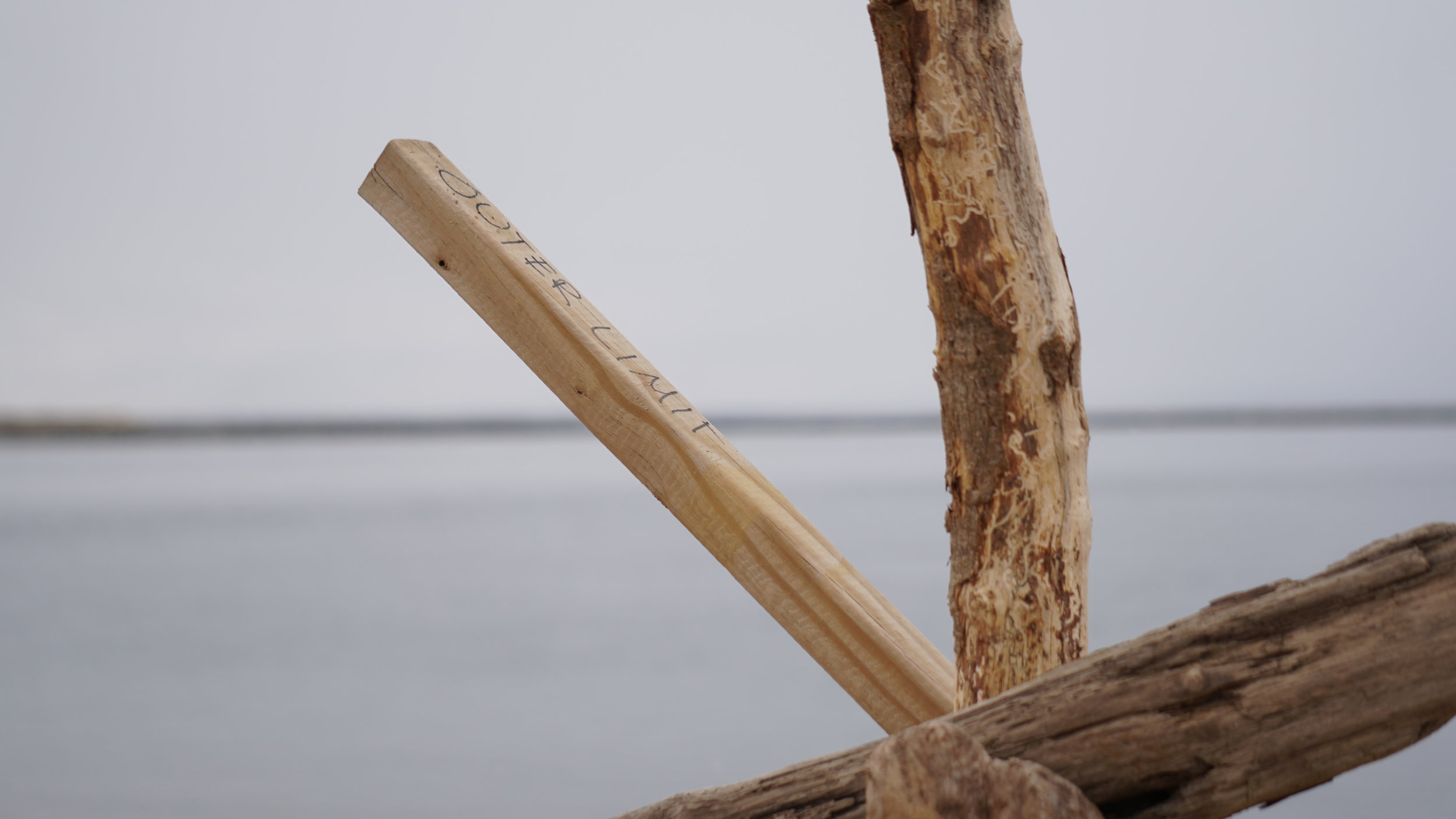
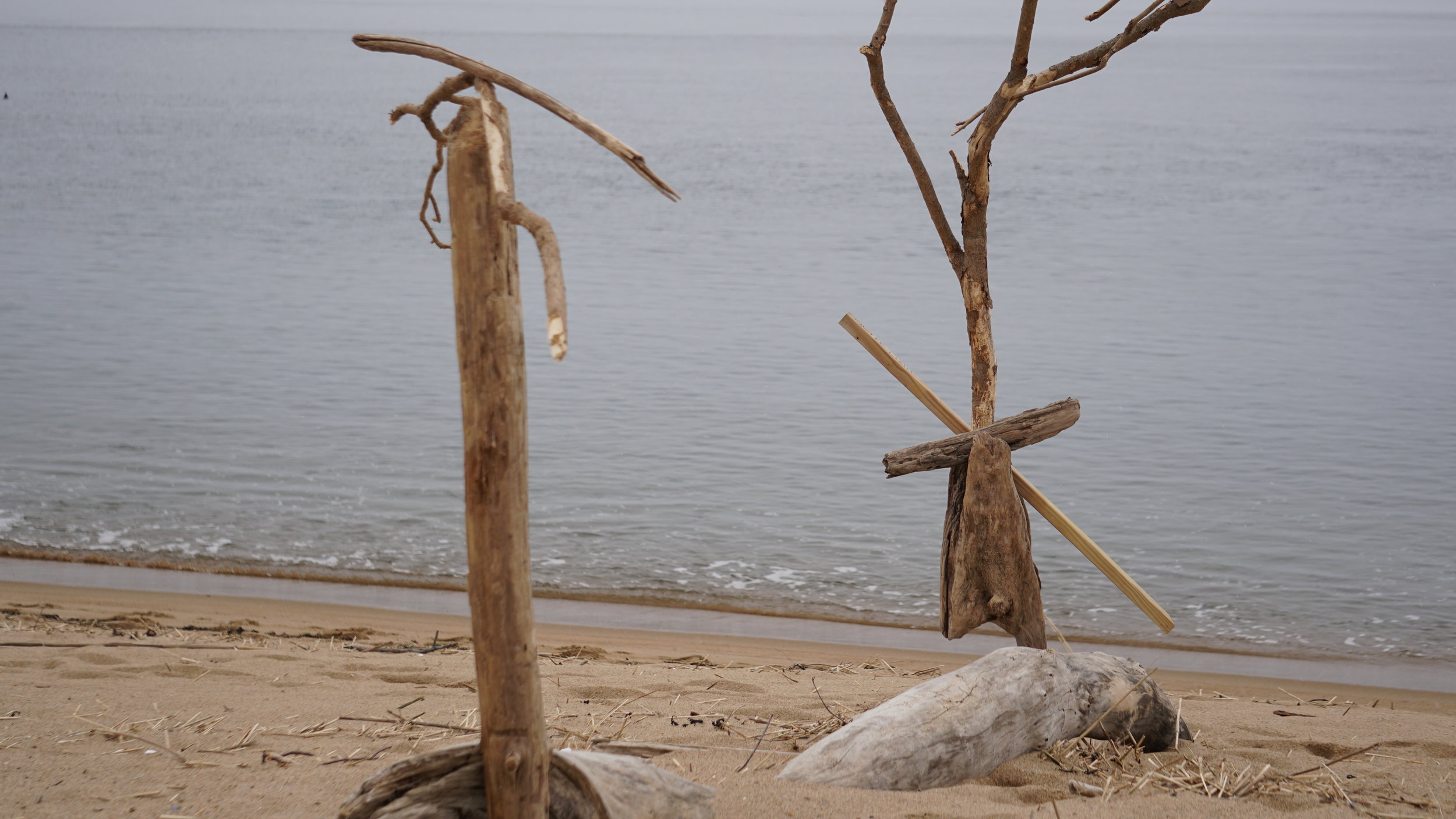
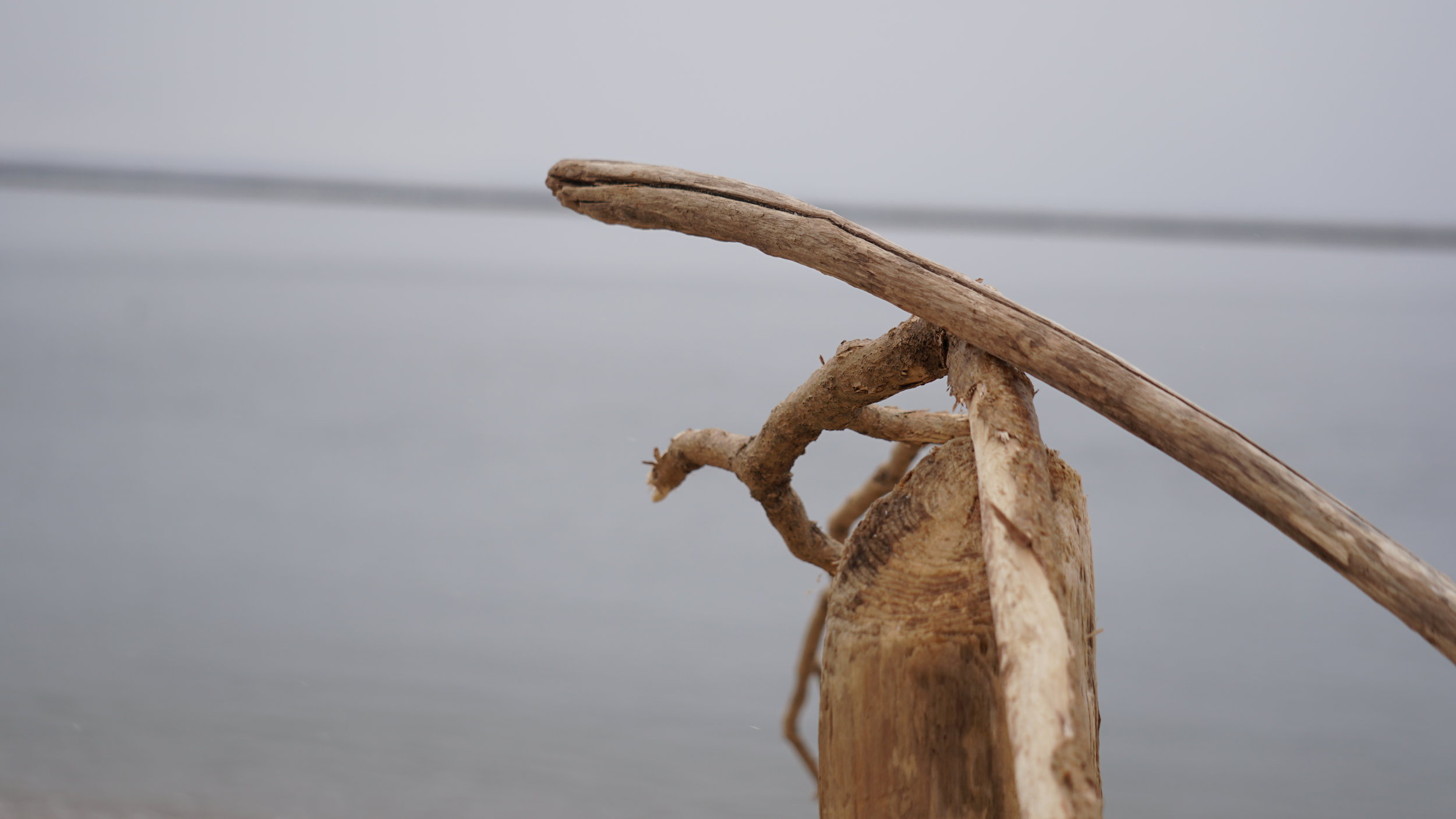
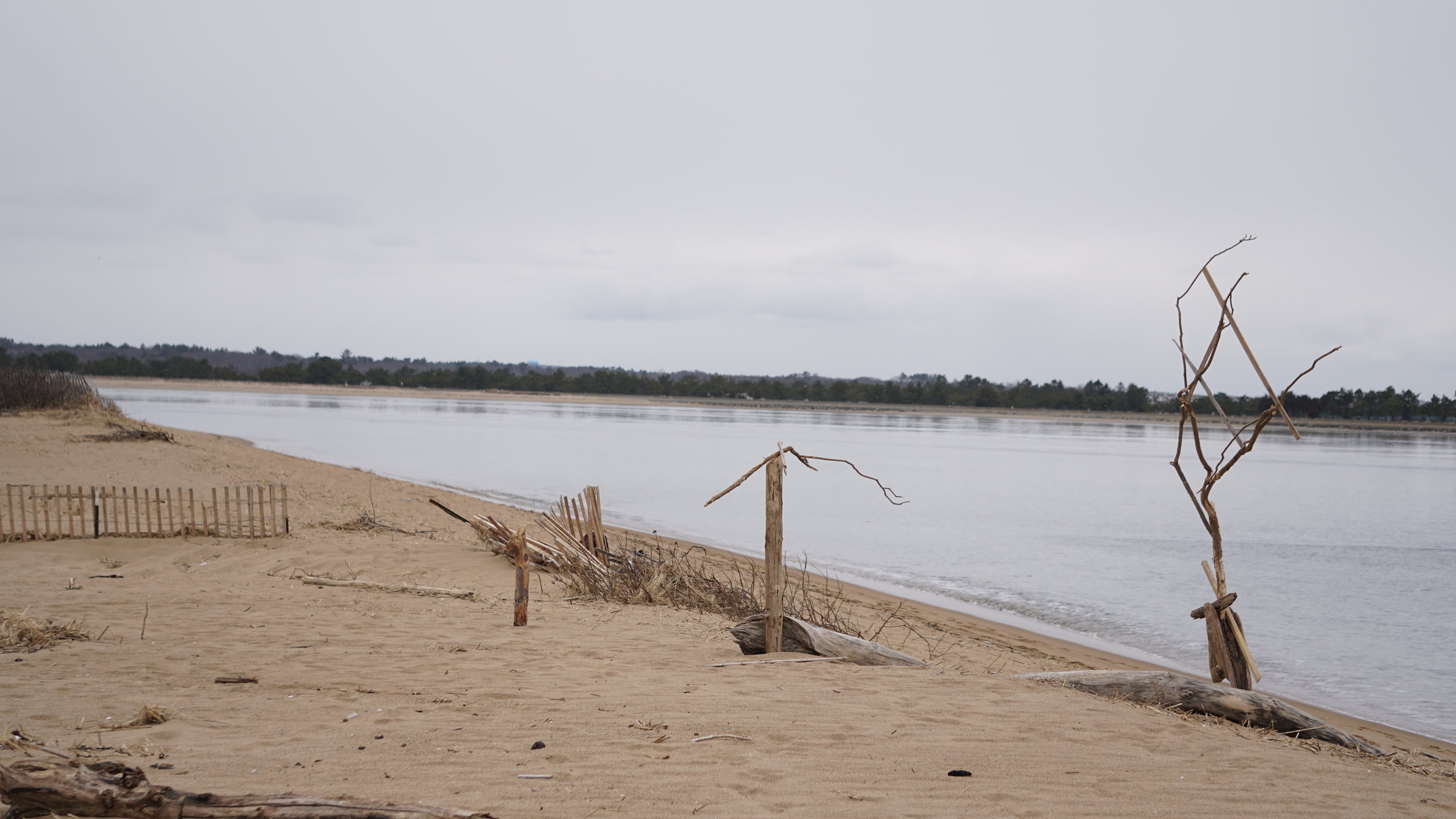
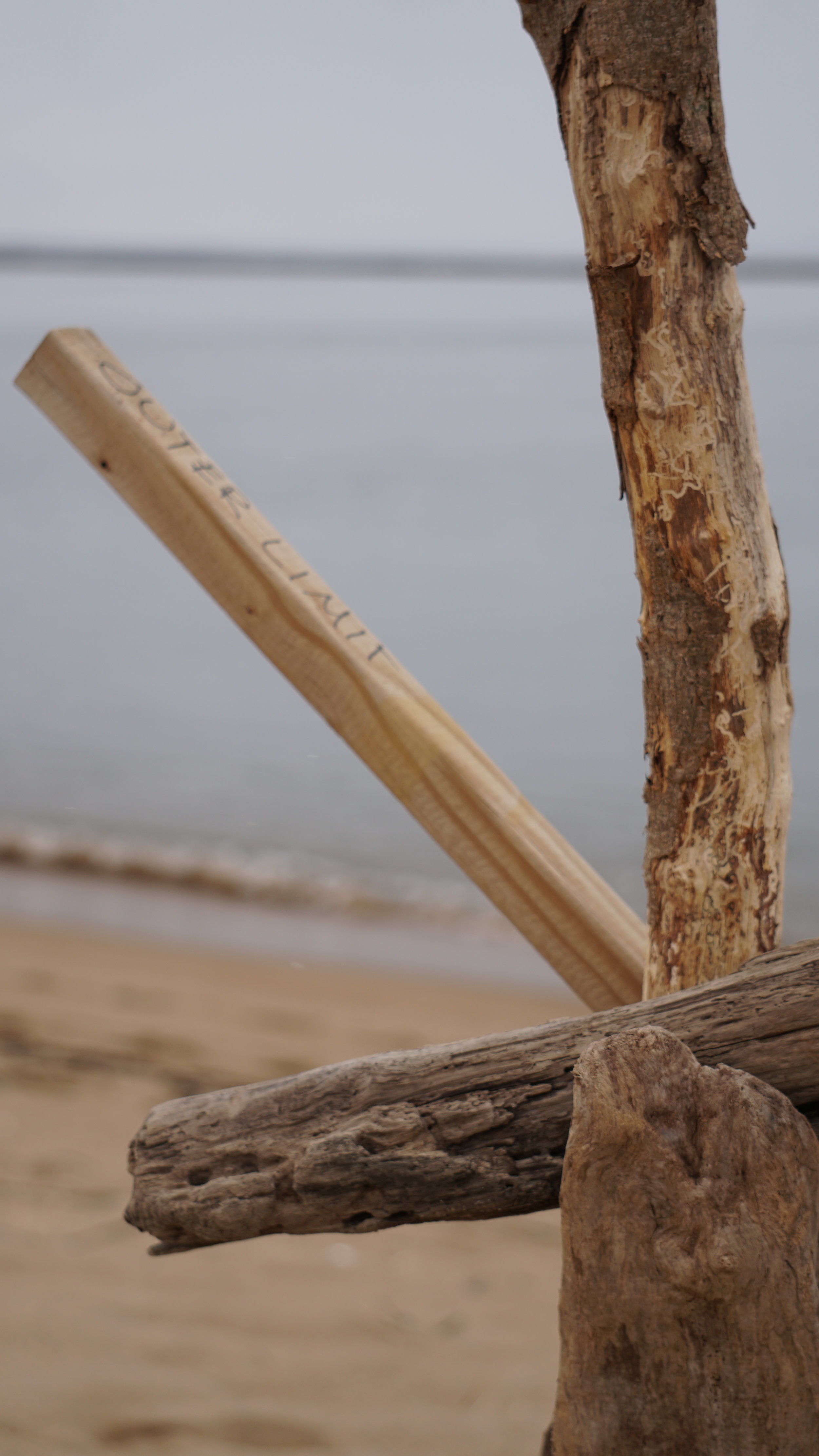
In the next blog post I will delve into the creation of mythic Plum Island, from its first swine colonizers to the partitioning of a "first class beach resort." This strip of land was sliced up, served to hundreds of vacation-goers, further dividing a piece of sand that ebbs and flows. It serves as the perfect metaphor for this divisive capitalist economy. Much like the Plum Island's million-dollar houses, the global perception of private ownership is illusive. With the rising tides, Plum Island might soon become uninhabitable. With the warming planet, our luxury, sense of comfort, will become inhospitable.
While "all that is solid melts in air," borders dissolve in water.

"Outer Limit," Public Installation by Tzintzun Aguilar-Izzo

